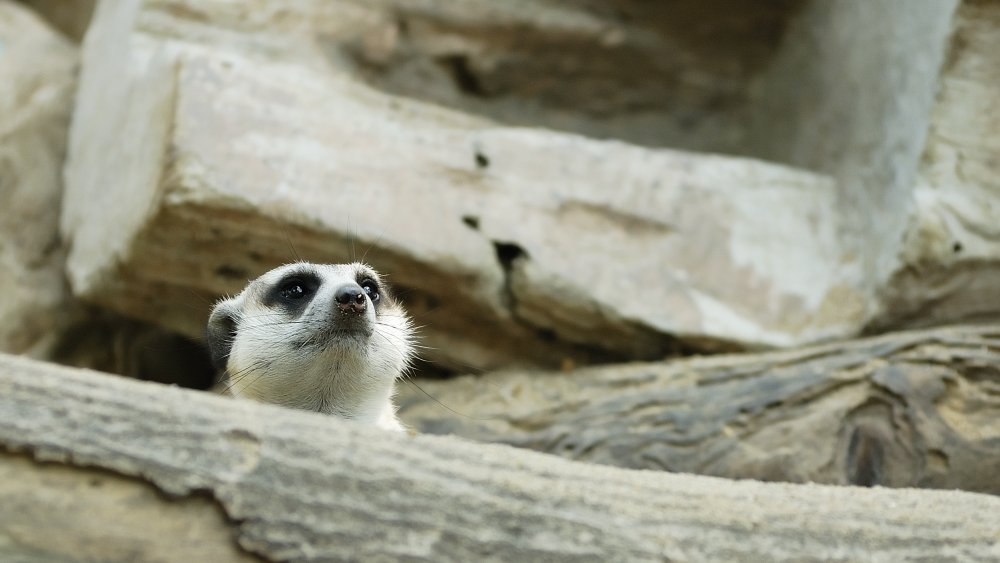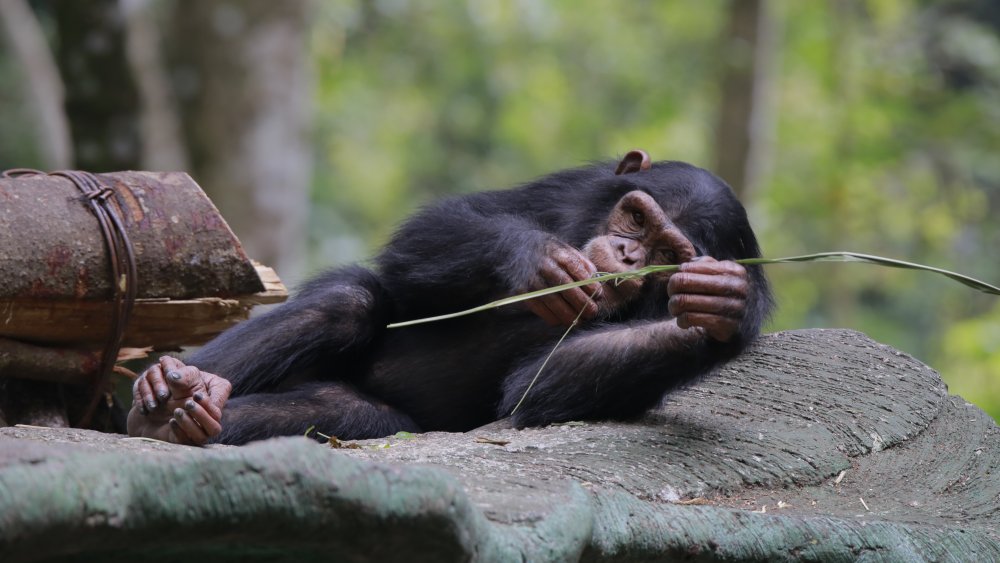The World's Most Murderous Mammal Will Surprise You
With all the true crime podcasts and documentaries filling our cultural space, you would be forgiven for thinking that humans were the most murderous species on Earth. However, according to a 2016 study conducted by José María Gómez from the University of Granada in Spain, we aren't. As the photograph above may hint, the top spot goes to the meerkat, who in Ed Yong's extrapolation of the study for The Atlantic, have almost a 20% chance of dying at the hands... well, paws of their own kind. Runners up include the red-tailed monkey, the blue monkey, and the red-fronted lemur.
The point of Gomez's study was to apply what he noticed about plants and insects – that closely related species shared similar levels of interpersonal violence – to mammals to see how violent humans were compared to the average mammal. The answer is that we are more violent than the average mammal, comparatively violent to primates, but due to modern societal structures, now markedly less murderous than our prehistoric ancestors — or even ones a millennium back.
Criticisms of the study, however, note the team conflated all kinds of deaths into the same category. So, they treated, say, cannibalism and infanticide, two types of same-species slaying that might occur for different reasons, as two examples of the same. By doing this, Richard Wrangham from Harvard University complains, that while primates primarily indulge in infanticide, humans are relatively unique among primates for killing adults, and that nuance is lost in the study.
Nature vs. nurture
However, even as we acknowledge how exceptionally violent humans act towards members of their own species, we should resist falling for the other extreme, that is believing that nature is incapable of such acts either.
Jane Goodall, famed primatologist, discovered how far chimpanzees would go when their society breaks down. The New Scientist recounted in 2014 how the united group of chimps she was studying in Tanzania's Gombe Stream National Park split in 1971 into two subgroups, one in the north and one in the south. While a direct reason couldn't be provided, it has been assumed that the death of the chimp Leakey in the end of 1970 led to the split. Over the next for years, chimps from the northern group would enter the southern group's lands to attack the other chimps until the males had either died or disappeared.
The reason for the chimp's descent into violence spawned a debate. On one side, Richard Wrangham said that chimps, like humans, are predisposed to violence. "By taking out a male from another group," the BBC explains "the attackers reduce their neighbours' ability to reproduce and at the same time increase their group's access to territory, food and mates." His critics say that chimp warfare is the product of human interference in the form of habitat destruction, which reduces territory, and feeding the chimps human food, which put a high quality source for the chimps to compete over. They still haven't reached the murderous meerkat's levels, however.

